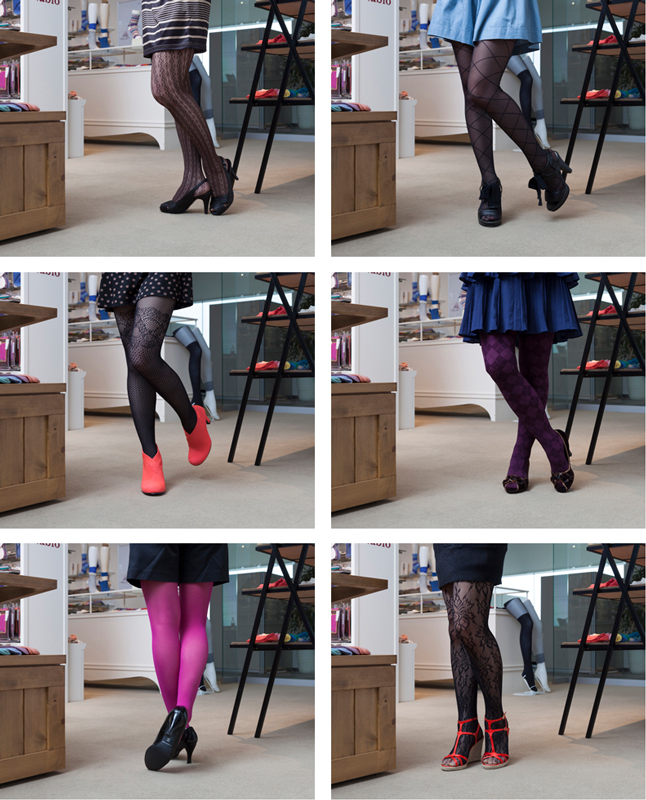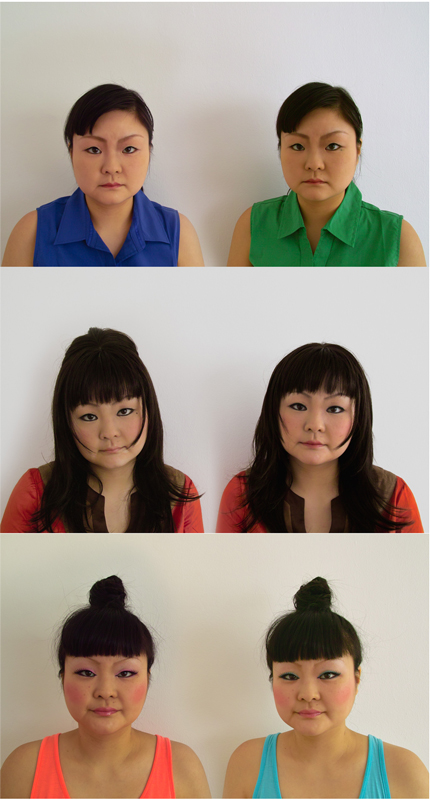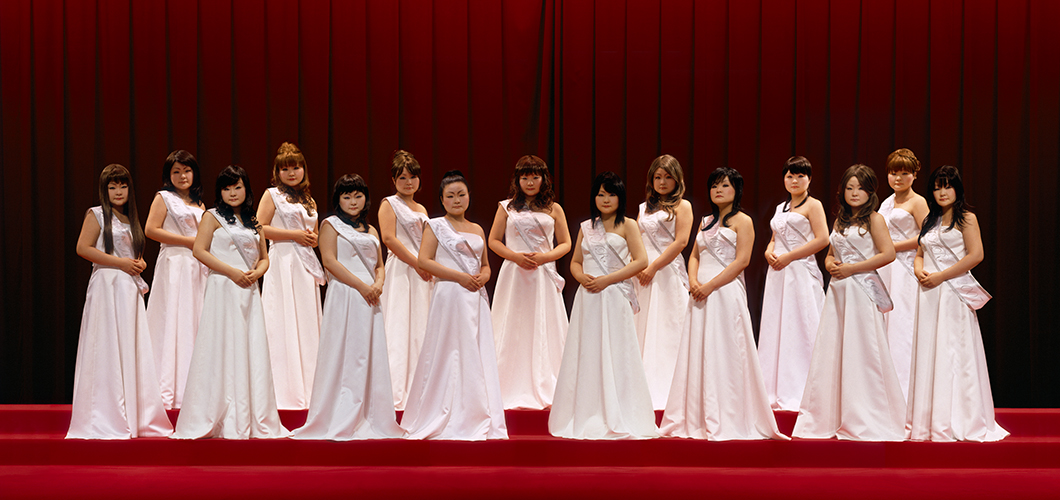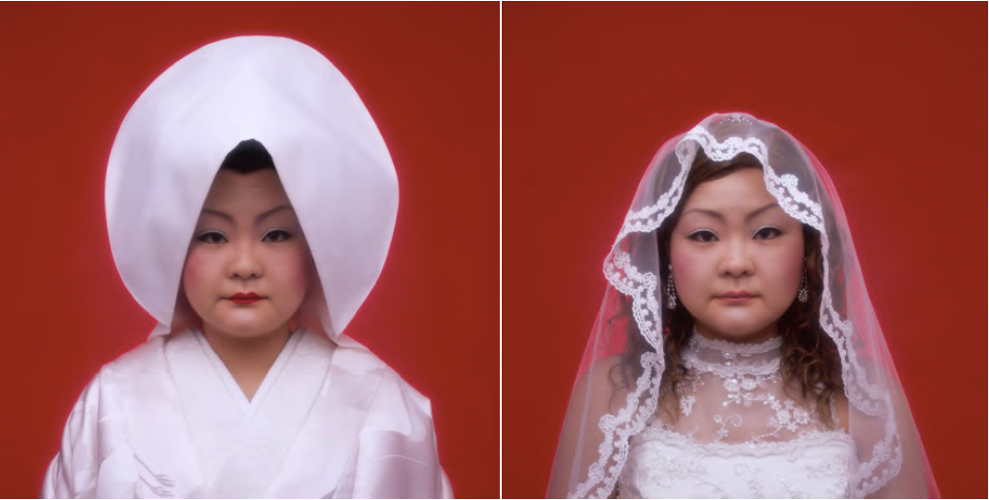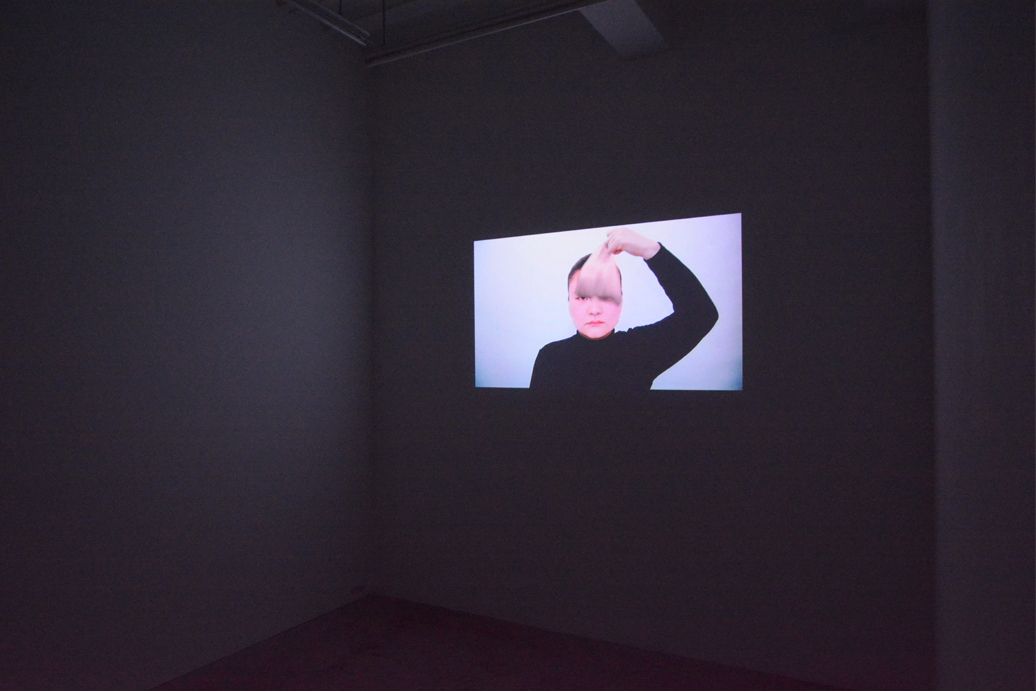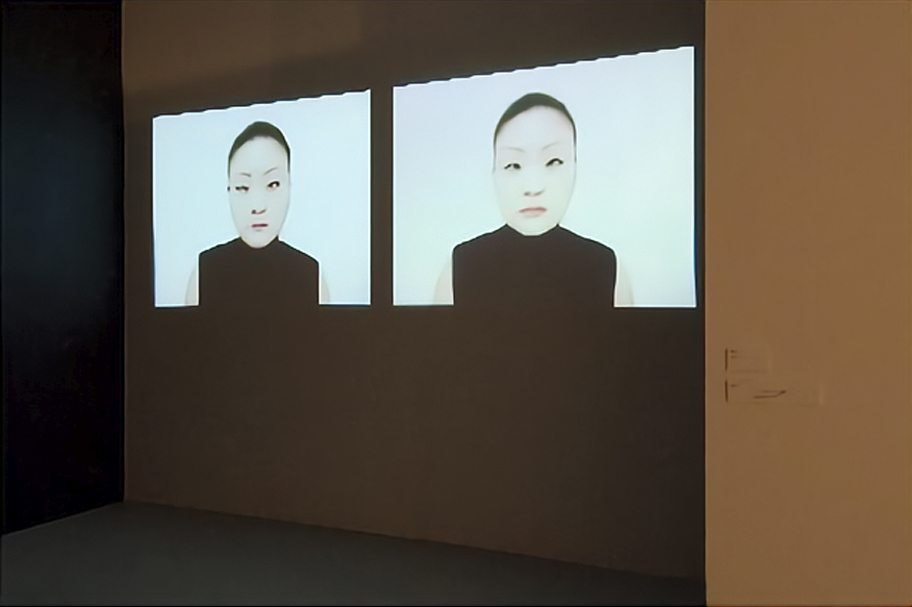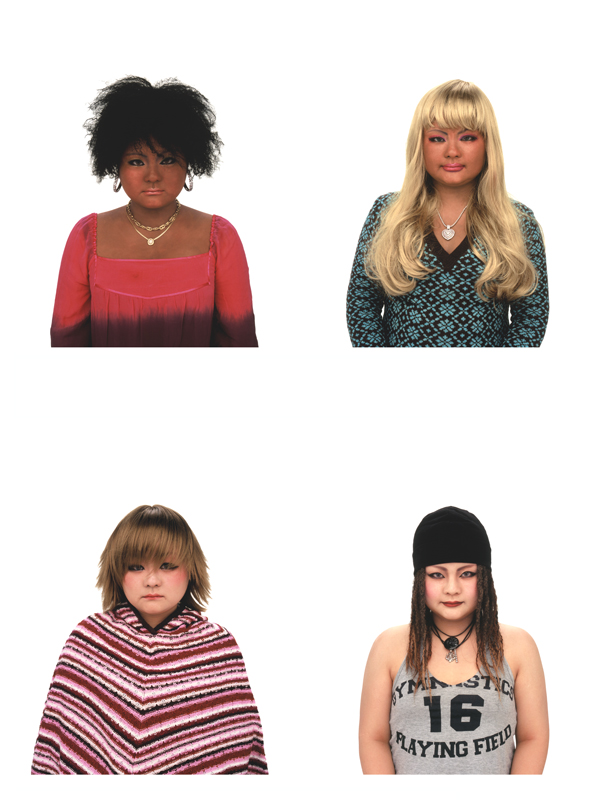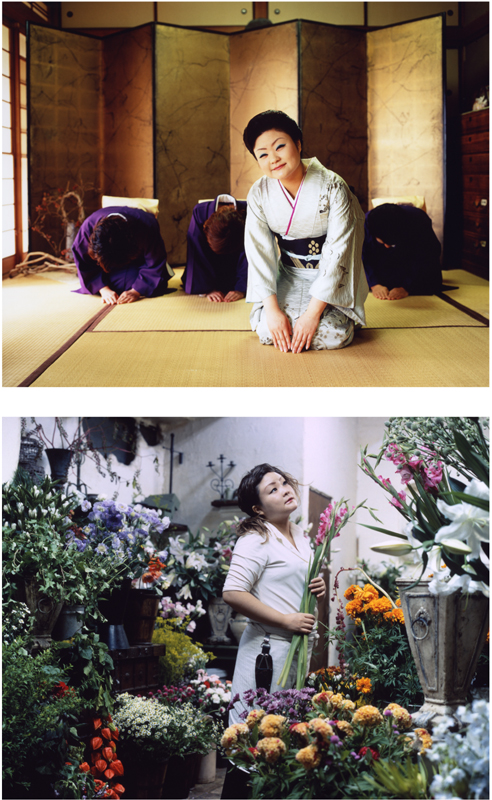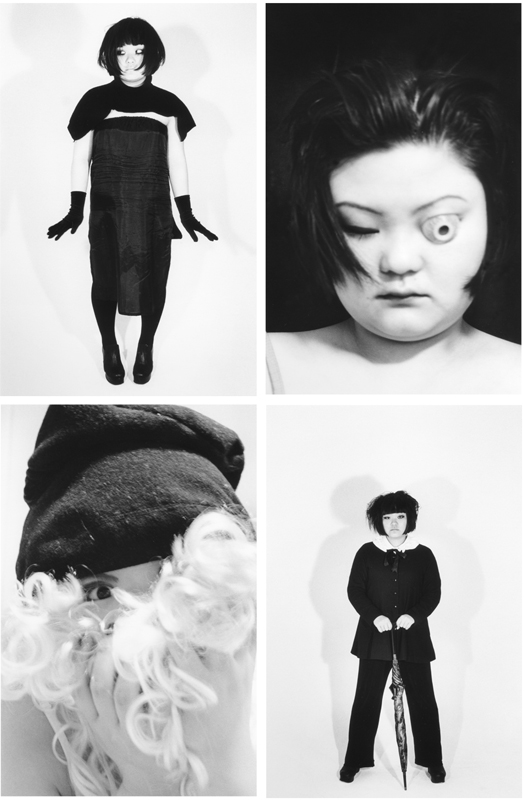影法師 (KAGEBŌSHI)
|
2018 ずっと作りたかった作品、でもどうやったら形にできるのか分からなかった映像作品が、実は前作《FACIAL SIGNATURE》から取り組んでいる「どうやって人は人を判断するのか」ということを考えることにつながると気がつきました。作るにあたって少々秘密を組み込みましたが、最終的に写真の基本でもある光と影の表現として完成しました。映っているのは? これはセルフポートレイトでしょうか? I had always wanted to make this video, but I wasnʼt sure how to do it. Then I real-ized it was connected to my thoughts around how we recognize and label people that Iʼd been exploring since my previous project, FACIAL SIGNATURE. Thereʼs a secret to it, but in the end, the basic form of expression is the same as photogra-phy: light and shadow. What is captured there? Is this a self-portrait? |
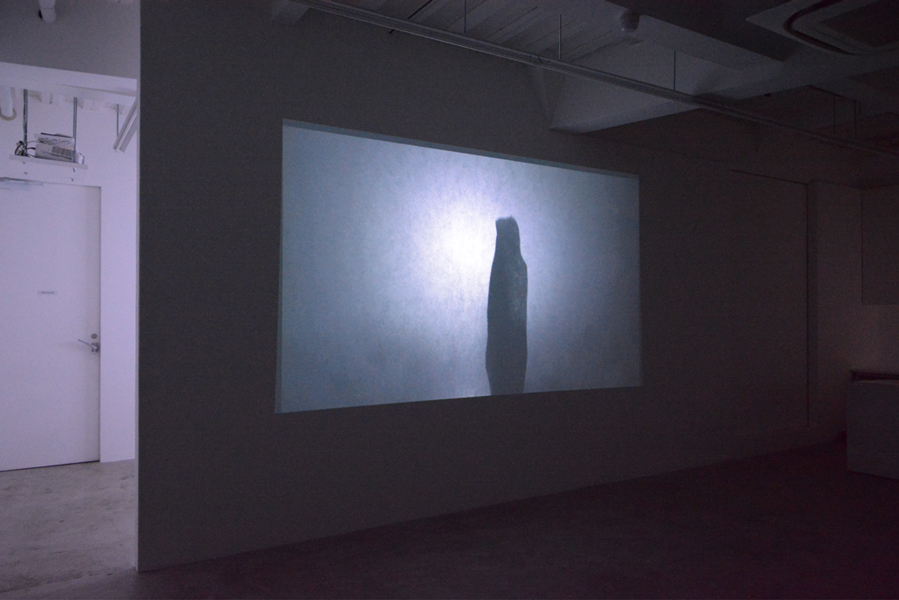
|
|---|
BLOOM
|
2017 このシリーズは美容雑誌『etRouge』(日経BP)に連載していたものです。私自身が『etRouge』さんのおかげでメイクにトキメキを取り戻したことからお願いして生まれた作品です。辞書によるとBloomの原義は「最盛期の花」。フラワーは茎も含む全体を指すけれど、Bloomは花の部分のみを指すそうです。開花する、開花させる、どちらの意味でもよくて、連載を見て開花させるぞって思ってくれる人、自然に開花する人がいたら嬉しいし、メイクへのトキメキを失くした人が、メイクの力を思い出してトキメクのも嬉しく思います。 These prints were serialized in the beauty magazine etRouge (Nikkei Business Publi-cations, Inc.). The project came about when I reached out after regaining a spark of excitement about makeup thanks to them. The original meaning of “bloom” is a blossom in its prime. “Flower” indicates the entire plant, including the stem and so on, but “bloom” apparently only refers to the blossom. If someone saw my work and bloomed, whether naturally or with determination, I would be glad. It would also make me happy if someone who lost that spark of excitement about makeup were able to regain it. |
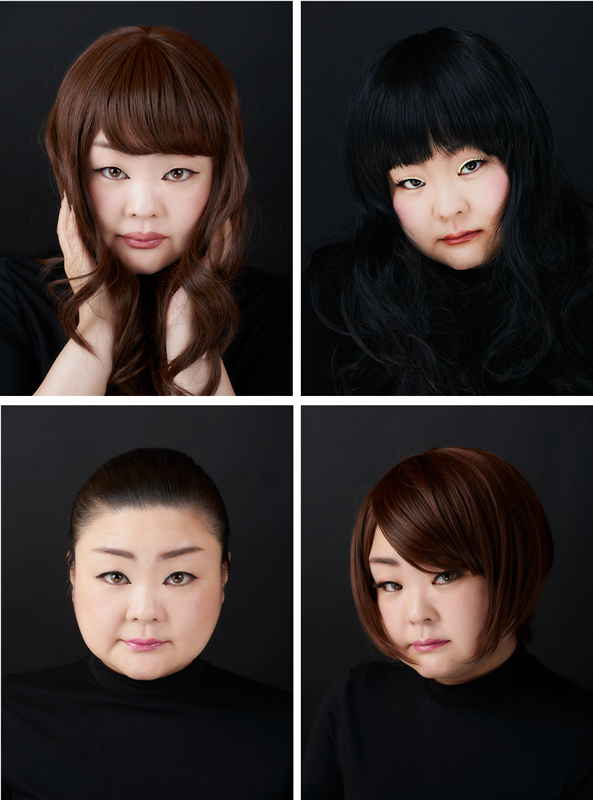
|
|---|
FACIAL SIGNATURE
|
2015 顔は判子や署名のようなもので、その人それぞれの ID、本人を証明するものだと思います。よく似た容姿であっても、顔を確認するまでは個人を特定することができません。それは同じ国籍、人種であってもそうでなくても変わらず、世界中の人間は遺伝子的に99.99999%同じ人間であり、国籍や人種など様々に違いはあっても、それらは人間についている付加価値のようなものです。ニューヨークに住んでいた頃、政治的には日本と東アジアの国家間で色々な問題はありましたが、個人的には東アジア人の友人もたくさんできました。そして私は色々なアジア人に見間違えられました。韓国人、中国人、台湾人、シンガポール人やモンゴル人等々。人は何を、どこを見て個人を判断しているのか知りたいと思い、様々なアジア人に見えるように変装してみました。 I think a face is like a hanko or signature, an ID that proves a personʼs identity. Even if their figures resemble one another, itʼs finally possible to tell two people apart by their faces. That is the same whether they are of the same nationality or race or not. Humans around the world share 99.99999% of the same genes, so any differences in nationality, race, and so on are merely added value on top of being human. When I was living in New York, there were all sorts of problems between Japan and other East Asian countries, but I personally had many friends from those countries. And I was mistaken for all different types of Asian: Korean, Chinese, Taiwanese, Singa-porean, Mongolian, etc. I wanted to know what we look at to recognize an individual, so I tried disguising myself as various Asian ethnicities. |
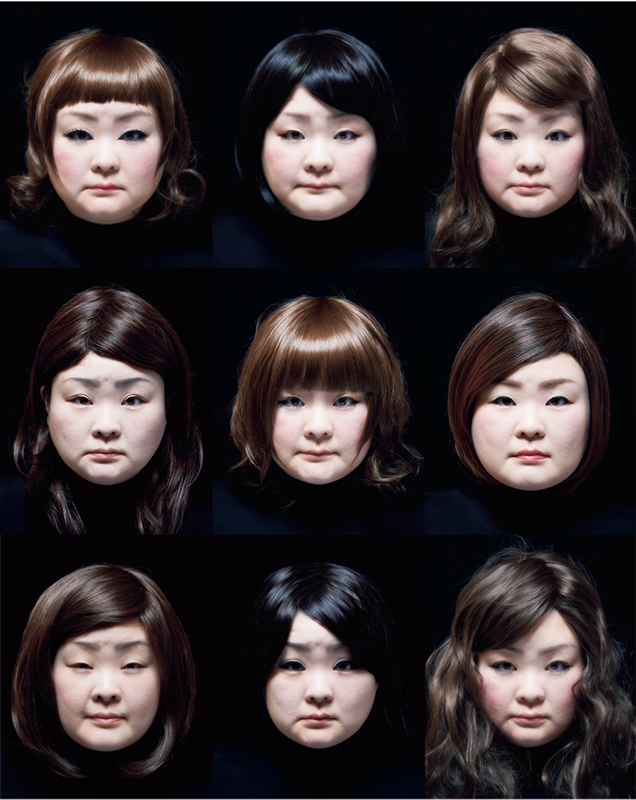
|
|---|
Sign
|
2012 このシリーズはアンディ・ウォーホル美術館主催のレジデンスプロジェクト“Factory Direct”でハインツ社さんとコラボレーションした作品です。いつものセルフポートレイトの手法から“TOMATO KETCHUP”と“YELLOW MUSTARD”を様々な外国語に変装させるアイデアを思いつきました。たぶん地球上の全ての言語を読める人、理解できる人はいないと想像します。しかしある言語の文字の形や雰囲気から一定の地域を想像することは可能で、見たことのある文字であればその国を思い出し、心をよぎると思います。それは欧米人が韓国人、中国人と日本人の見分けがつかないことに似ていて、出会ってすぐにどこの地域の人なのか外見だけでは分からないのと同じことのように私には感じられます。 This series is a collaboration with Heinz I did as part of Factory Direct, a residency project organized by the Andy Warhol Museum. I came up with the idea to use my usual self-portrait method to disguise “tomato ketchup” and “yellow mustard” as other languages. I doubt there is anyone in the world who can understand all of the languages on Earth. But you can imagine a region to some extent based on the shape and atmosphere of a languageʼs characters, and if you recognize the charac-ters, the country may cross your mind. It reminds me of how itʼs difficult to tell where someone youʼve just met is from based solely on appearance, like how Westerners sometimes think all Japanese, Korean, and Chinese people look the same. |
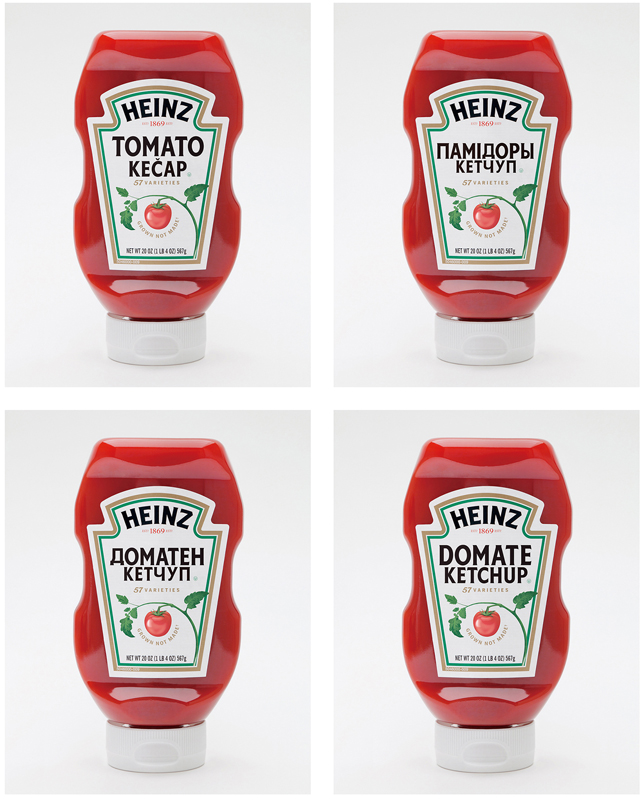
|
|---|
これ、わたし (This is who I am)
|
2010 2011年に福音館書店の月刊誌『たくさんのふしぎ』で出版した絵本『これ、わたし』のために撮りおろしたシリーズです。絵本を作ることは新作を3シリーズ作るくらい大変でしたが、私の中では《ID400》のエッセンス版とも言える作品で、限界まで削ぎ落とし「外見と内面の関係」について追求した作品となりました。 This is a series of prints I did for a picture book, Kore, watashi (This is who I am) published in Fukuinkanʼs magazine Takusan no fushigi (A world of wonders). |
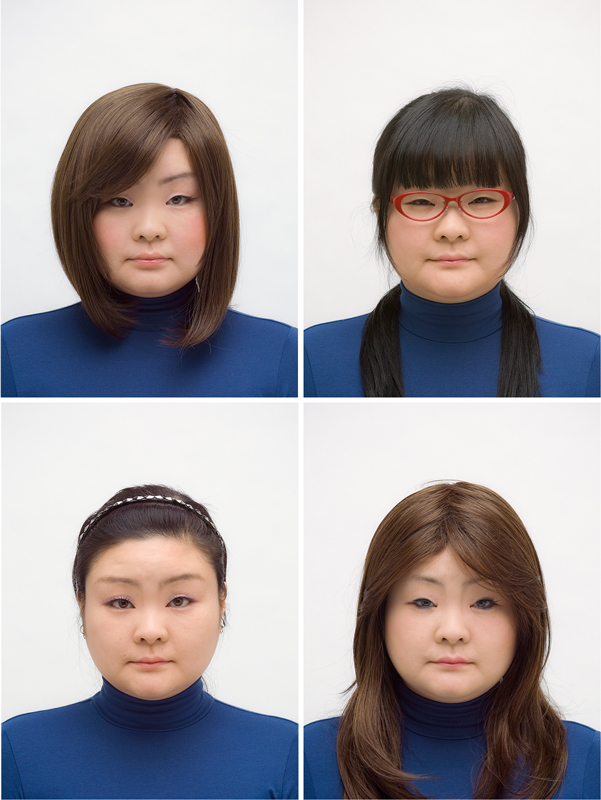
|
|---|
Mirrors
TIARRA
Decoration
|
2008 海外の美術館のキュレーターから“原宿ルック”というテーマで展覧会依頼があり制作しました。このテーマから、私に求められているのは東京を代表する日本のティーンエイジャーをモチーフにした、東京のファッション、日本のファッションに絡むコンセプトの作品であると考えました。依頼を受けた時にはすでにコギャルをモチーフに制作した《cover》というシリーズがあったため、ロリータファッションと呼ばれる外見をモチーフとした新作と組み合わせることで展覧会を作りました。《cover》シリーズと同じく全身が写ったものと顔のアップの2種類から構成されるシリーズです。 I created this in response to a request from a curator of an overseas museum for a work on the theme of the “Harajuku look.” What I took from that was the feeling that I should create on the concept of Tokyo fashion—Japanese fashion—with the motif of teenagers of Japan (representing Tokyo). When I received the request, I had already done the series cover, with the kogal motif, so I created the exhibition by combining that with a new work on the appearance known as Lolita fashion. Like cover, this series is composed of full-body shots and closeups of my face. |
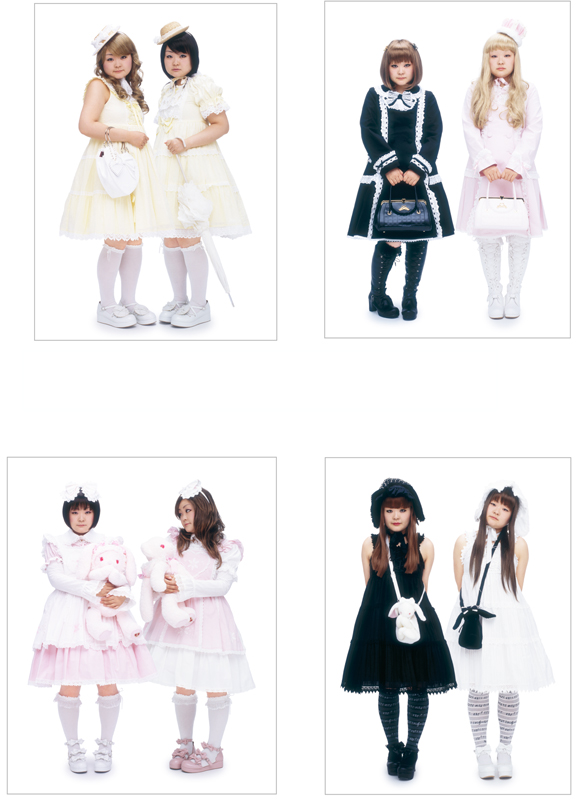
|
|---|
Decoration/Face2008 |

|
|---|
BRIDE
glasses
|
2006 雑誌『Esquire』のメガネ特集用に撮り下ろした作品。メガネは他の作品でも使っている変装アイテムの1つで、メイクをしない男性にとっては髭とメガネが女性にとってのメイクだと私は思っています。 Photos taken for Esquire Japanʼs glasses feature. Glasses are a disguise item I have used in previous works, and I think that for men who donʼt wear makeup, glasses and facial hair fulfill the same function as makeup does for women. |
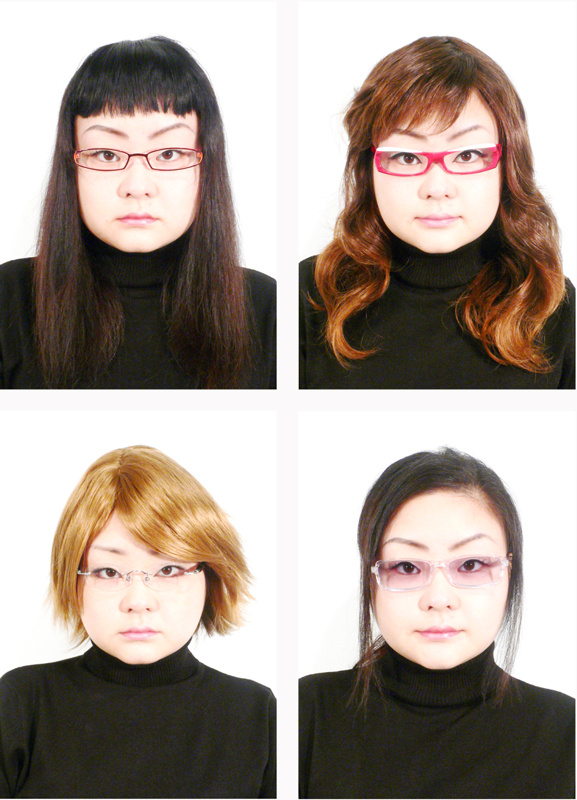
|
|---|
Appearance
Recruit
|
2006 十代の頃からリクルートスーツを着たたくさんの人を街で見かけては違和感を感じていました。自分が就職活動をする年齢になった時には、友人たちが髪を黒く染めてヒールを脱ぎ丈が長めのスカートを履いているのを見てますます違和感を感じていました。その違和感を履歴書に貼る証明写真を使って作品化したものです。 Starting in my teens, I noticed so many people wearing new recruit suits around town and felt strange. When I reached job-hunting age, I saw my friends dye their hair black, take off their heels, and put on long skirts, which felt even stranger. I turned that sense of incongruity into art via the ID photos we take for resumes in Japan. |
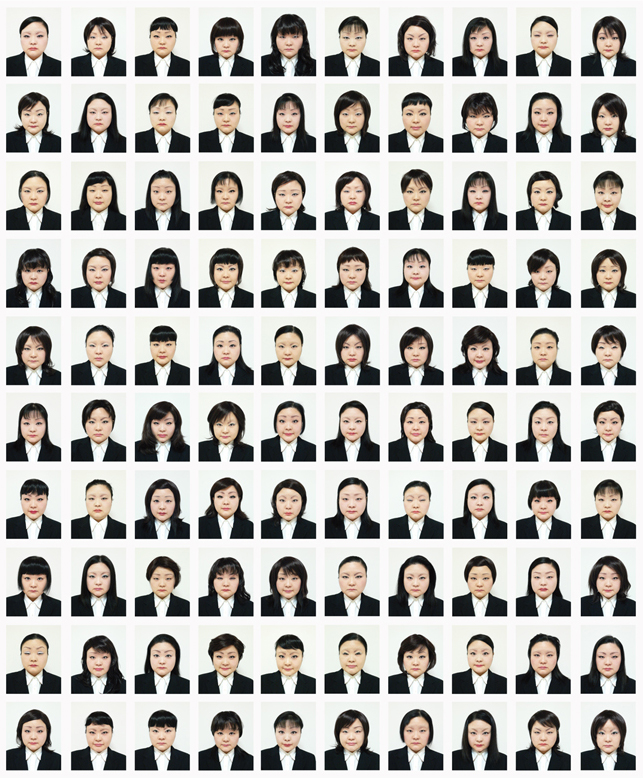
|
|---|
MASQUERADE
|
2006 Masqueradeとは仮面舞踏会のこと。人は皆その時々の状況や相手にあわせた仮面をかぶっています。それが良いとか悪いということではなく、それを象徴的に表わすことができるのがキャバクラという場だと思い、キャバクラ嬢をモチーフに制作しました。 A masquerade is a masked ball. Everyone wears different masks depending on who they are with and the situation they are in. Iʼm not saying thatʼs good or bad, but that I think it can be symbolized by kyabakura (hostess clubs), so I used a hostess motif for this work. |
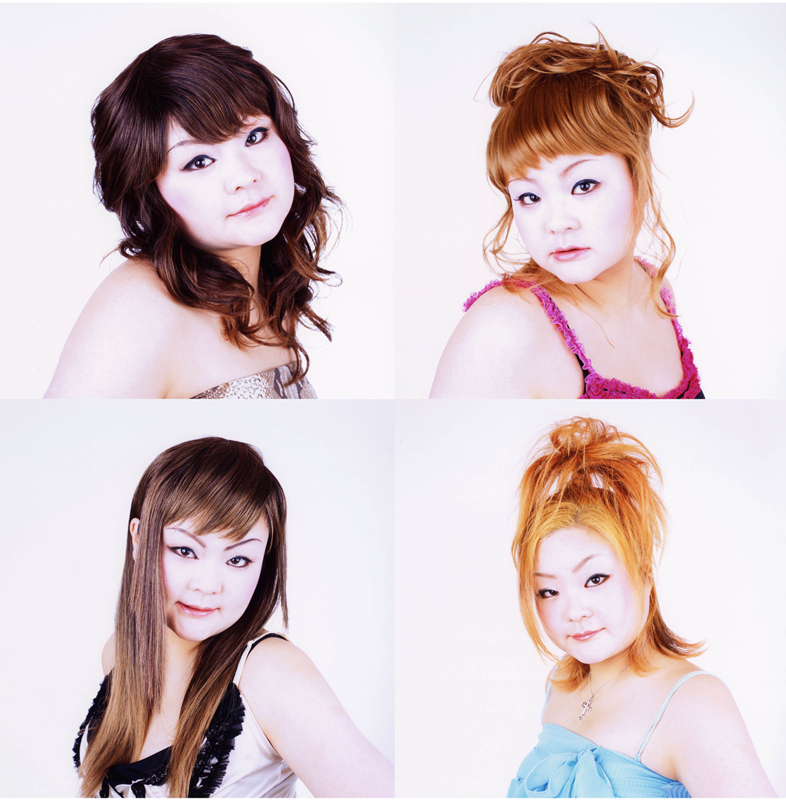
|
|---|
School Days
|
2004 |
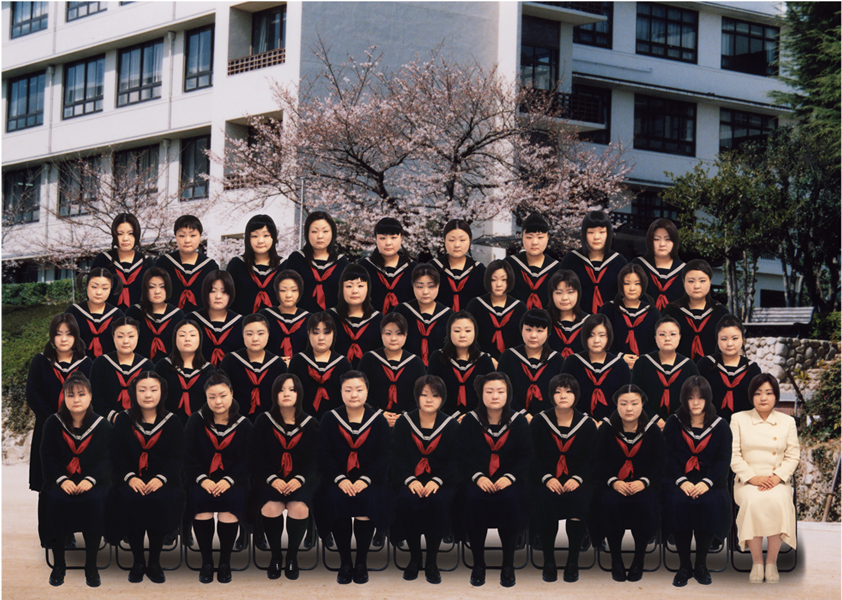
|
|---|
Costume
cover
|
2002 ガングロと呼ばれたコギャルが流行した90年代、彼女たちの外見だけを見てメディアで否定的な判断をされていたことに違和感がありました。流行りものとはいえ、誰もが知っていて社会現象にもなった流行だったからこそ私は作品化しました。今でも海外では注目されているシリーズです。このインパクトのあるメイクやファッションは一見個性的に見えます。しかし、私には塗りたくることで個性をだしている人もいれば、友達と同じようにメイクをして目立つことで自分の個性を隠している人もいたのではないかと思います。作品は当時雑誌で彼女たちがとっていたようなポーズをしたものと、証明写真のように無表情な顔のアップの2種類で構成しています。 In the ʼ90s, when the kogal look called ganguro was popular, girls were demonized in the media simply for their appearance, which struck me as strange. I incorporated it into my work because it wasnʼt only a trend, it was such a social phenomenon that everyone knew about. This series continues to get a lot of attention overseas. At a glance, the bold makeup and fashion appears individualistic, but I believe that while some people painted their faces to bring out their uniqueness, others may have done their makeup in this loud way to match their friends and thereby conceal their uniqueness. The series includes shots where I struck poses like the girls did in the magazines of the day as well as expressionless, ID-style closeups of my face. |
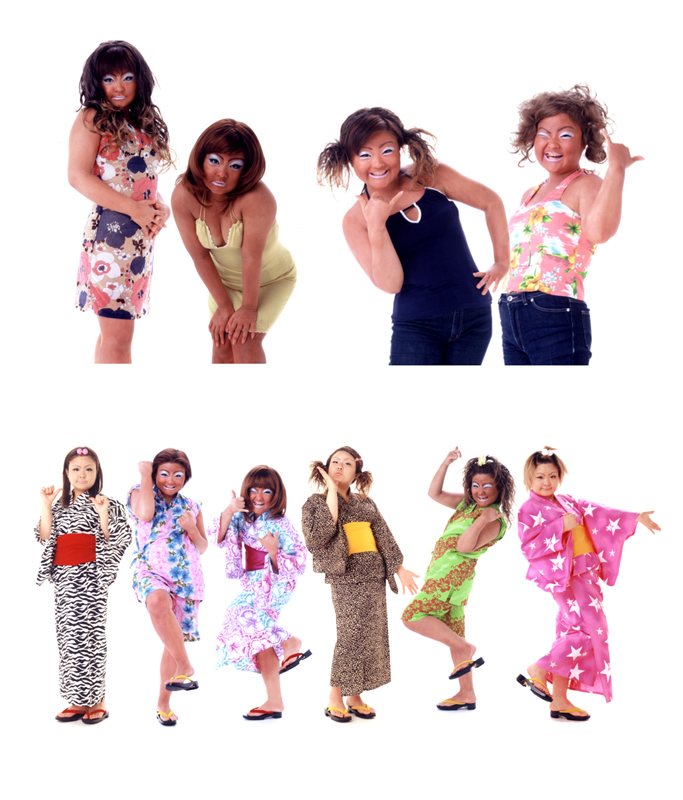
|
|---|
cover/Face2002 |
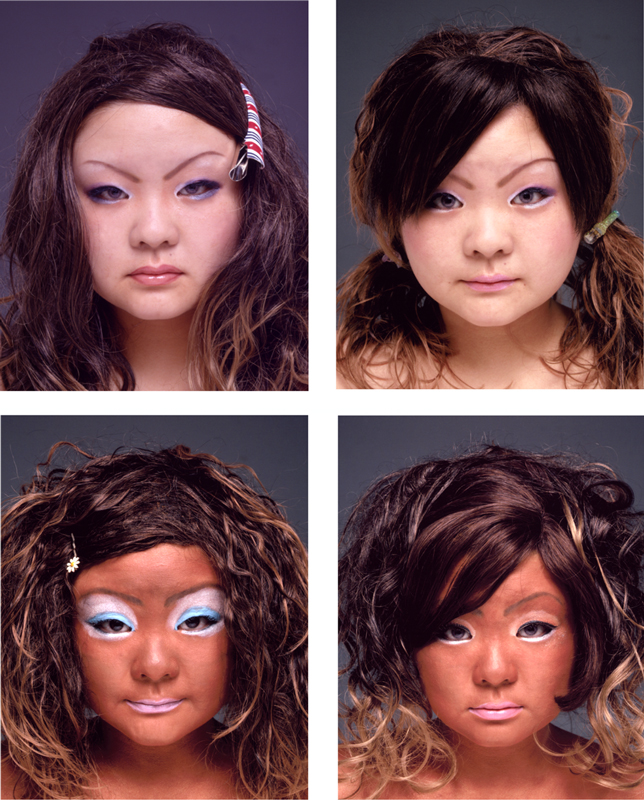
|
|---|
OMIAI♡
|
2001 |
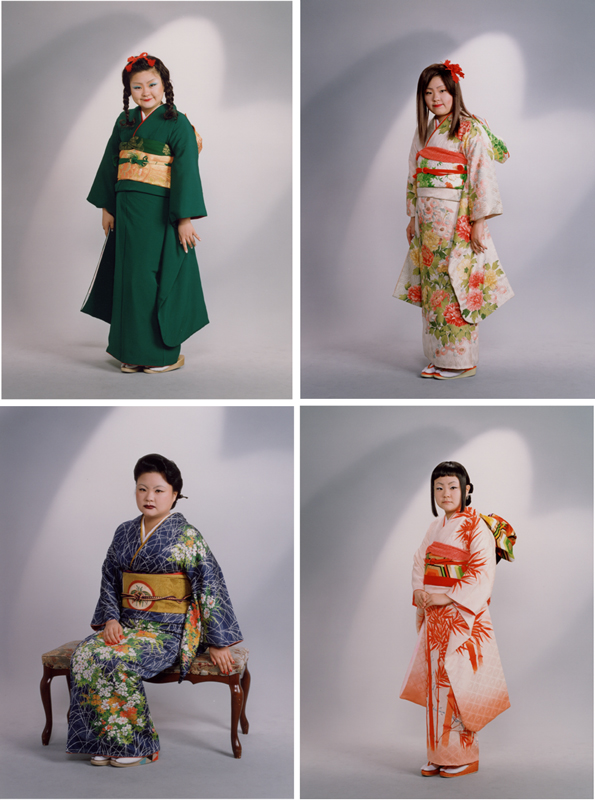
|
|---|
ID400
|
1998 私のデビュー作と呼ばれているシリーズで、大学の卒業制作の作品として「変わらないはずの内面と簡単に変わる外見」というコンセプトで作りました。街中にある自動証明写真機で400回変装して撮影しています。この《ID400》の中に《SKIN HEAD》も含まれ、《SKIN HEAD》は400 枚の写真を撮り終えた後で髪を自分で剃り、ノーメイクで撮影しています。時間が経つほど《SKIN HEAD》が自分の全てのシリーズにつながる重要な作品なのではと感じています。この頃から私の大きなテーマは変わっていません。外見と内面の関係について切り口(コンセプト)を変えて作品を作り続けています。学生の時、展覧会場に坊主頭の私がいても写真の400人が全て私だと気がつく人は全体の2割程度でした。このことが私にもっと外見と内面の関係に興味を抱かせました。 The series known as my debut, my graduation project that I created with the concept of “oneʼs supposedly unchanging inner self and easily changing outer appearance.” I took photos in the automated ID photo machines around town in 400 different disguises. ID400 includes SKIN HEAD. After taking the 400 ID photos, I shaved my own head and photographed myself without makeup. The more time passes, the more I feel that SKIN HEAD is an important piece that connects to all of my other work. My major themes have not changed much since this time. I continue to examine the relationship between outer appearance and inner self through differ-ent concepts. When I was a student in the gallery with my shaved head, only 20% of the visitors realized that all 400 photos were of me. That experience made me more interested in the relationship between outer appearance and inner self. |
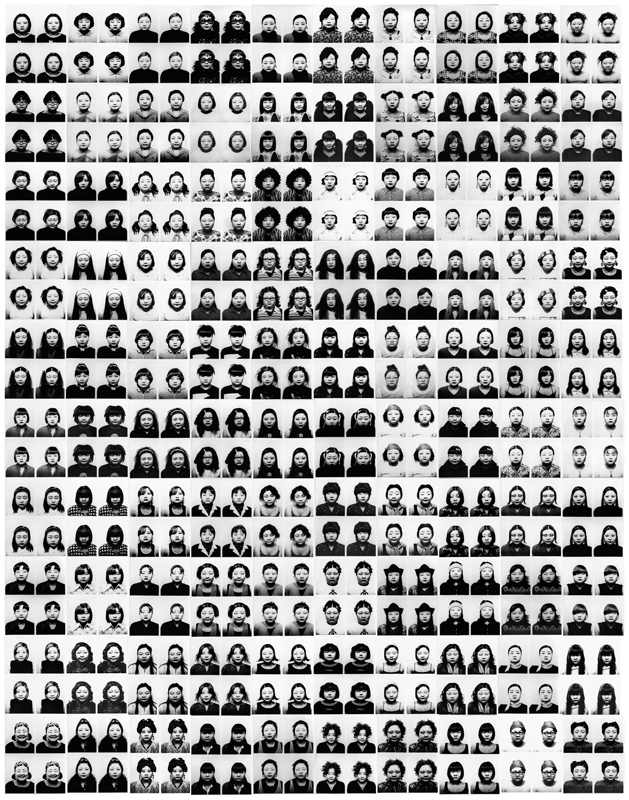
|
|---|

